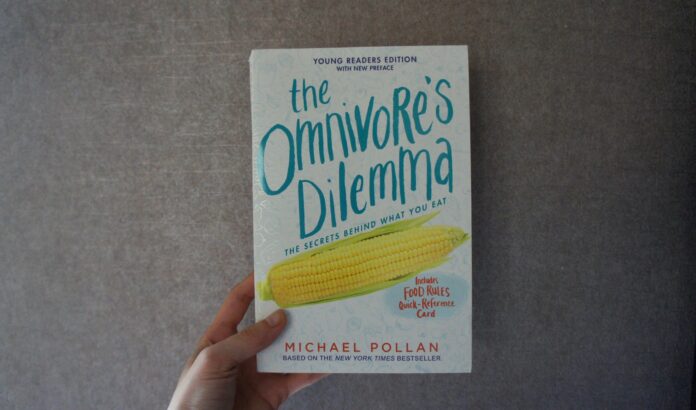
By Leila Luqman
ABU DHABI — Michael Pollan is the author of five New York Times bestselling books and a professor at the University of California at Berkeley Graduate School of Journalism. One of his books is titled “In Defense of Food,” which has been adapted into a documentary series on Netflix. “In Defense of Food” followed the highly successful “Omnivore’s Dilemma.”
“Cooked” aired last summer with four episodes to give viewers an in-depth explanation of what really happens when we cook — or don’t — using the four elements of nature: earth, air, fire, and water. In one of his episodes (“Water”), Pollan essentially tries to understand why some cultures find it more difficult to cook. Asking ourselves how we got to this point is more important than we realize, and in search of an answer to that very question, he went to Mumbai, India, for food that has medicinal value and then back to his home base of Berkeley, where he learns everything there is to know about cooking in a pot.
The link between food and nature is all about bringing the right ingredients and flavors together. Water plays a significant role in cooking, but to be able to create flavor, we need pots that can survive for a good amount of time over fire. And it was because of something as simple as that, that there was a very big technological advance.
“Clayed pottery didn’t come along until about 10,000 year ago,” note Pollan and filmmaker Alex Gibney.
According to Le Cordon Bleu, “These pots were made fairly simply back then. And just as the soil and clay concentration from one area to the next would vary, so would the composition and use for the clay cookware.”
Now we can do amazing new things: we can mix flavors, we can use spices and herbs. There’s so many foods that we couldn’t eat unless we had water to soften them and bring them to life. And so, this opened up a whole new palate of possible flavors — the birth of cuisine.
It is so important that the right ingredients are combined, and what flavor depends on is: time. Time is everything in the dishes we make.
“It’s all about time. Given enough time, water will break down the toughest fibers in both plants and animals into a tasty, nutritious liquid. The aroma instantly tells us where in the world we are, culinarily speaking,” according to Pollan and Gibney. “What most of us have lost the ability to do is use skill and time. We are constantly in a state of panic, we want everything to be instant.”
No one has the time to cook a proper meal anymore, when in fact, time is the most precious ingredient that is missing in our recipes, and our lives. Shortcuts seem more attractive, especially for people living in households where both parents are working.
Veteran Food Industry Market Researcher and Food Industry expert Harry Balzer points out, “Today, Americans spend a mere 27 minutes a day on food preparation, and spend less time cooking than people in any other nation.”
What we grasp from this is that eating and preparing are not the same thing. Who will do the cooking? Pollan came across a Wall Street Journal op-ed by Tim and Nina Zagat, stating the fact that.
“People would be better off staying an extra hour in the office doing what they do well, and letting someone else, who is a professional, do what they do best, and cook for you,” according to Pollan and Gibney.
In a nutshell, this was thought to be more efficient and cheap.
The Feminist Revolution
The division of labor in the past was very clear. For a long time, in many countries, including the United States, cooking was women’s responsibility.
In many traditional societies, when men were out working or hunting, women were in the kitchen cooking. The feminist revolution came along, women went to work, and then they stopped cooking. That was the end of cooking. But it’s more complicated than that. The food industry has been trying to get into American kitchens for a very long time. Everything had become instant and convenient.
The food industry
It was clear the food industry was targeting women, specifically, busy housewives.
Writer and food historian Laura Shapiro recounts: “Food companies after World War II had to get their product into people’s kitchens, and then they had to get them used in a lot of different ways. Canned meat, luncheon, and frozen fruit salads are all examples.”
The food industry got us used to a lot of processed food ingredients — food that is ready to eat, already cooked. Advertising campaigns in the 1960s and ’70s essentially revolved around time and convenience. There needed to be a new division of labor in the household. The food industry was trying to put a halt on arguments and fights at home between parents, coming up with a strategy: “to align their interests with the aspirations of women and the pressure on men to solve this great problem — cooking,” according to Pollan and Gibney. They are making cheap ingredients as attractive as they can without spending a lot of money.
People cooking traditional foods at home creates obstacles and so much knowledge is lost because of that. But bringing children back into the kitchen would rebuild a culture of cooking.
Why do we tend to stay away from the produce section? Pollan mentions: “Over the last several decades, produce has gotten a lot more expensive and processed food has not.”
Organic food, which is grown with healthier options, is more expensive and not everyone can afford it.
Visit to a Muslim community
Pollan visited a Muslim community, the Bohra Community Kitchen in Mumbai, where food is equally distributed and served to all members of the community. A cook from the BCK shares his thoughts: “No one should feel pride in being rich, and no one should feel shame in being poor.”
Samin Nosrat, an undergraduate studying English at Berkeley who has cooked in many restaurants, had been a student of Pollan’s a few years ago, and was now teaching him how to master pot cooking. He had been her teacher on writing, and she became his teacher on cooking. She puts meaning into the little tasks, like cutting onions, sifting flour, and reminds us that these are the mindful tasks that are being thrown to the side — forgotten and not cared for by many anymore. Nosrat enthuses about the joy that comes to her when she cooks, “As a culture, we’ve gotten so far away from these simple tasks, like it’s getting in the way of life,” she said.
Pollan’s trick is not to lecture people into the kitchen, it’s to lure them into the kitchen, with pleasure. We should be cooking because it’s satisfying and important to us, and necessary to our health and happiness, not because we have to.
“The cook is working with plants and animals. You reconnect with the fact that industry doesn’t feed us, nature feeds us,” Pollan said.
Links:
Chefs: Chefs
“Cooked” website: “Cooked”
Michael Pollan’s website: Michael Pollan
Ciao Samin. (2004). Retrieved from http://ciaosamin.com/info/
K. Shoji. (2015). Retrieved from: http://www.japantimes.co.jp/culture/2015/12/02/films/michael-pollans-bestselling-book-defense-food-adapted-documentary-film/#.WLgJOrFh1lA
This story was originally published on May 17, 2017. It was re-uploaded on Jan. 2, 2021.




